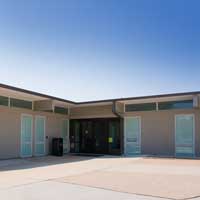Hunt Gallery: Exhibit honors LGBTQ worldwide monuments
August 26, 2015

The Gay Rub is a collaborative project created and organized by artist/poet/activist Steven Reigns, showcasing a collection of over 150 rubbings from important markers of LGBTQ history.
Reigns will speak at the opening of his exhibition-project in the Cecille R. Hunt Gallery (8342 Big Bend Blvd.) at Webster University from 6-8 p.m. on Aug. 28. The event is free and open to the public.
The Gay Rub documents historical signs, tombstones, cenotaphs, plaques and monuments from around the world. The project seeks to draw attention to the LGBTQ events and individuals under-represented or underappreciated within history. The rubbings themselves act as an archive of historic markers, calling attention to what LGBTQ events and individuals gets recolonized or legitimized through public commemoration.
First Friday Lecture
Prior to the Hunt Gallery exhibit opening, Reigns will also speak at DADAH's First Friday Lecture on Aug. 28, from noon-1 p.m. in the Sverdrup Building, room 123.
About the Artist
Steven Reigns is a Los Angeles-based poet and educator, and was appointed the first City Poet of West Hollywood in October 2014. Alongside over a dozen chapbooks (small poetry collections), he has published the collections Inheritance (Sibling Rivalry, 2011) and Your Dead Body is My Welcome Mat (Burning Page Press, 2001). He holds a BA in Creative Writing from the University of South Florida, a Master of Clinical Psychology from Antioch University, and is a seven-time recipient of The Los Angeles County's Department of Cultural Affairs' Artist in Residency Grant.
A Webster Faculty Contribution
This exhibit also has another Webster connection, thanks to a Webster faculty member who knows the artist and was able to contribute via recent trip abroad.
DJ Kaiser, associate professor and coordinator of Teaching English as a Second Language in the School of Education, recently returned from a Faculty Research Grant-supported trip to South America and contributed a piece to the exhibit: a rubbing of the first LGBTQ monument in South America, in Montevideo, Uruguay. The monument is in the Plaza de la diversidad sexual (Sexual Diversity Plaza), a block from Independence Plaza. The monument reads: "Honrar la diversidad es honrar la vida. Montevideo por el respeto a todo género de identidad y orientación sexual. Año 2005." (To honor diversity is to honor life. Montevideo for the respect of all gender identities and sexual orientations. 2005).
"I was excited to get to see this in Montevideo," said Kaiser. "Last summer after visiting the Webster Leiden campus, I traveled to Amsterdam where there is a Homomonument, and then to Berlin where there is a monument for gays and lesbians killed during the Holocaust."
